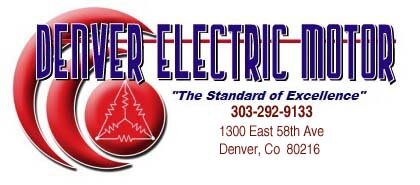The “Big Four” factors impacting motor health
What we do with failure analysis information can have a major impact on equipment efficiency, reliability, and cost of ownership. Often, the motor isn’t the root cause of the problem; it’s external factors from the application that I call the “big four”:
Routine maintenance
Environment surrounding the motor-driven system
Alignment during installation
Power supply for the motor-driven system
Failure to address the “big four” will likely result in the same failure of a new or newly repaired motor.
Maintenance. To prevent winding and bearing failures, keep the motor clean and follow the manufacturer’s recommended lubrication intervals. As a best practice, do not mix lubricants, many of which are incompatible and cause premature bearing failure. Over- or under-greasing a bearing can have the same result.
Environment. Key things to monitor in the motor-drive system’s immediate environment are ambient temperature and vibration, relative humidity, airborne contaminants, and potentially corrosive elements. Individually or collectively, these could hasten bearing and winding failures.
Also, make sure there’s sufficient airflow to cool the motor. If the motor has air filters, change them regularly. Dirty filters restrict airflow into the machine, causing it to run hotter and increasing the risk of bearing and winding failures.
Alignment. Something commonly overlooked during the installation process is proper alignment. Make sure the alignment of the motor-drive system is within tolerance, not just an individual component. For example, flexible couplings often function adequately with a fair amount of misalignment. However, a motor-driven system will generate less heat and lower vibration levels if it meets or exceeds the most stringent alignment specification for that system. This will lead to longer bearing life and a more efficient motor-driven system that can save money on utility and repair costs.
Power supply. The quality of the power supply is important for winding longevity. Common concerns include variation in supply voltage that is more than ±10% of the nameplate voltage, voltage unbalance at the motor terminals that exceeds 1% of the average voltage, and transient peak voltages at the motor terminals. Voltage variation and unbalance can increase winding temperatures and cause premature failures. Transient peak voltages at the motor terminals can damage winding insulation, creating turn-to-turn or ground faults.
Condition monitoring. Once the motor-driven system is set up properly and you’ve handled the “big four” factors impacting motor health, condition-based monitoring can help prevent unplanned downtime. This could be as simple as having the service center check vibration, temperature, and insulation resistance on a prescribed timetable.
Remote condition monitoring with Industrial Internet of Things (IIoT) devices is the next step. These devices detect and record step changes in certain inputs and then prompt you to investigate. Some of them even use machine learning to reduce false positives, by getting “smarter” as they see more anomalies and receive feedback from users.
The key to success with either method is to evaluate and act accordingly when there is a step change in a monitored trend. This may prompt you to send a motor out for reconditioning before it fails, keeping your productivity up and your repair costs down. If you need help during the evaluation and action phase, rely on a service center that adheres to ANSI/EASA Std. AR100.
Why consider an EASA-accredited service center? EASA has long encouraged motor users to require that service centers adhere to ANSI/EASA Std. AR100. Many users also require that each step in the supply chain comply with some quality assurance program. The EASA Accreditation Program fulfills this need and beyond that, it has several components that are key to the efficiency and reliability of your motor fleet, including:
Use of calibrated equipment with traceability (where required for precision measurements)
23 audited categories covering everything from initial inspection to completion of the repair
More than 70 motor repair/rewind criteria are audited to ANSI/EASA Std. AR100—from terminal connections to core testing, from shafts and rotors to frames, housings, bearings, and balancing
Continual, documented employee training
Internal and external auditing
EASA’s Accreditation Program requires annual internal audits and independent, third-party on-site audits initially and every three years to ensure compliance with ANSI/EASA Std. AR100-2020. Motor users can provide this accreditation to their customers to show that a critical part of their supply chain or process has a quality assurance program that meets the industry standard, ensuring efficiency and reliability.
Repair standards. If repair turns out to be the best option, it’s logical to ask how you can be sure the work will be done correctly. Fortunately, the motor repair standard approved by the American National Standards Institute (ANSI), ANSI/EASA Standard AR100-2020: Recommended Practice for the Repair of Rotating Electrical Apparatus, defines the performance criteria for a quality repair. It also cites best practices from widely accepted industry standards organizations, such as ANSI, ABMA, CSA, IEC, IEEE, ISO, NEMA, and NFPA. To be assured of the highest quality repairs, specify that they be made in accordance with ANSI/EASA Std. AR100-2020.
*To learn more about ANSI/EASA Std. AR100-2020 and the “big four” or find a service center that participates in EASA’s Accreditation Program, visit EASA’s Electromechanical Resource Center at www.easa.com/erc.
This story originally appeared in the May 2022 issue of Plant Services.
